#garcilaso
Text
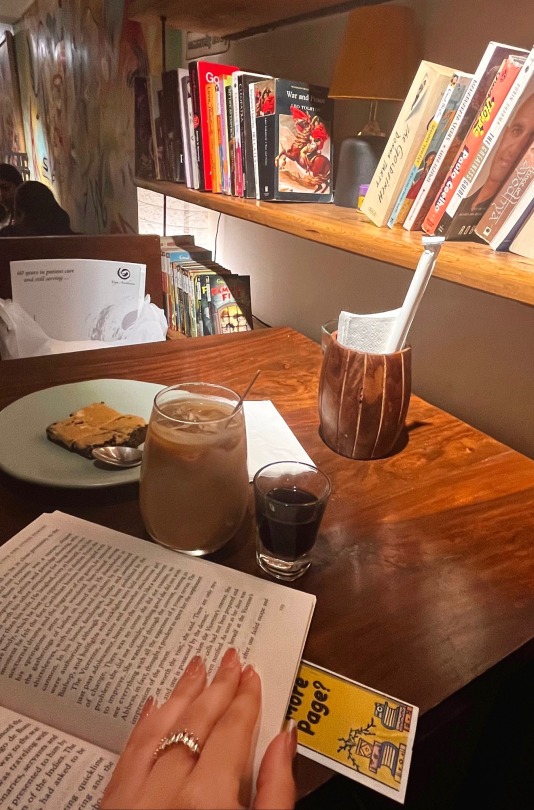
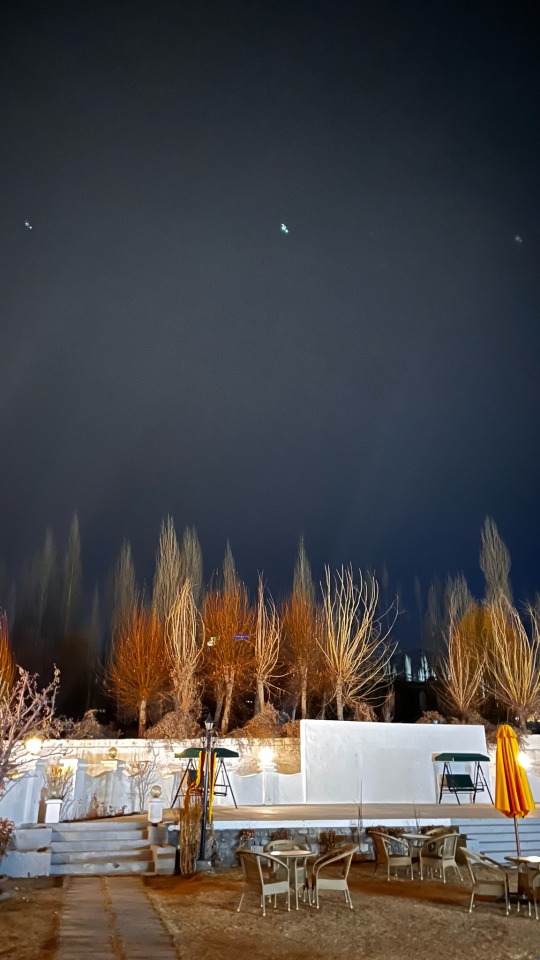
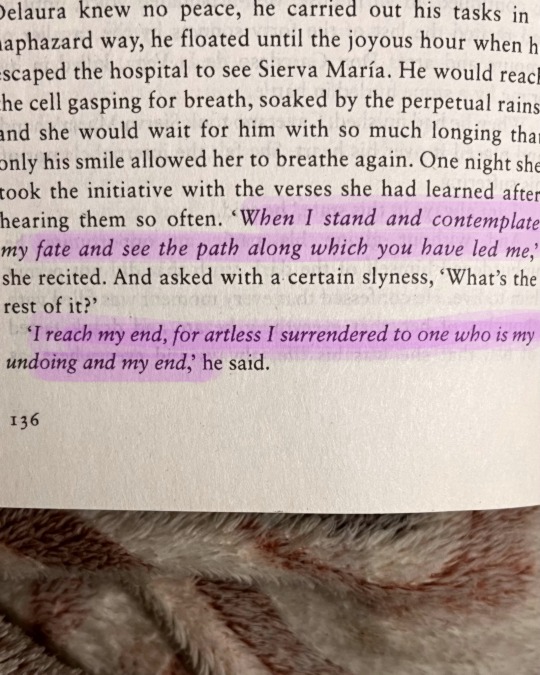

“When I stand and contemplate my fate and see the path along which you have led me
I reach my end, for artless I surrendered to one who is my undoing and my end.”
0 notes
Photo
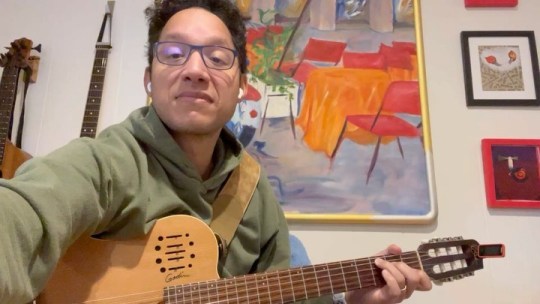
Este año descubrí a @palabraspala, y su obra ha sido un feliz hallazgo. Ya sé que muchas de sus canciones se quedarán conmigo por siempre. De entre ellas, destaco “Ponme”, que —según las estadísticas de @spotify— es el tema que más escuché durante el año. Mi predilección por los #endecasílabos, la fluidez armónica y el texto en sí han hecho de esta belleza de canción una constante en la banda sonora de mi vida. Aquí la canto un poco más rápido que como viene en el disco, para que quepa en un minuto. La letra les debe a dos grandes maestros y precursores del #soneto. Y el autor los saluda en uno de sus versos. Yo lo saludo y le doy gracias por este bálsamo. “Ponme” #Letra y #música: Pala Ponme donde no alcance tu estatura, donde tu luz no sea imaginable. Ponme ante la pared, detrás del sable, o hazme lo que a los miedos la lectura. Ponme los instrumentos de tortura y aprieta el torniquete, por si acaso. Ponme donde #Petrarca o #Garcilaso o ponme en el camión de la basura. Ponme donde nacer esté prohibido o donde los crupieres del nirvana apuesten nuestras dichas al olvido. Ponme en tu palomar o en tu ventana que yo seré el candil que siempre he sido: uno que solo alumbra con tu llama. https://www.instagram.com/p/CmmEDR4ORYM/?igshid=NGJjMDIxMWI=
0 notes
Text
I feel the need to be kissed so so much and to be loved and held and touched and everything that it feels painful. I want to be kissed so so much I end up laughing and smiling against the lips of the other person. I want to be caressed and pampered, to have someone struggle to peel a grapefruit only to end up peeling it myself to give it to them. I want to feel human skin on mine again and again and again.
I want to be kissed so so much that I forget I don't like kissing
#some thoughs on being a bit touch starved and missing my exgirlfriend#feel free to reblog#this makes me think of Garcilaso de la Vega and one of his poems#it's a sonet if I'm not wrong#its about two sheep herders talking about love one of them had lost the love of his life forever (she died)#the other one tells him he has never known true love and that he (the other herder) was lucky enough to ever know how love and be loved#while he hasn't ever been in love of loved#personally i think that it's better to have been loved even if that person is no longer there#i miss her but in the way one misses spring#we are definitely not coming back because of circumstances outside of our control but we are still friends and she'll be there for me#as i will be for her#I don't miss her intensely the thought of her hasn't made me cry i miss our time together and the fun and the dumb things we did or said#anyway we doin fine#sun is shining#and my exams this term turned out very well it's very likely for me to get a scholarship that I want so we rollin#use sunscreen guys the sun is scorching already
6 notes
·
View notes
Text
Yesterday I went to Trujillo with a friend and I read this thing in an informative pannel in a museum about the native pre-roman people in Trujillo being Lusitani, and now I’m so confused, because I thought the most eastward settlement of the Lusitanian tribes was somewhere near Cáceres, but not even the city itself (given we have Lusitani, Vettoni and Celtici objects and craftworks in the city). Sure, Trujillo is just 30 minutes from Cáceres (by car), but I don’t know, it seems to be too far east for a Lusitani settlement to be anywhere near by. I need to investigate a further, I’m not convinced the population of Turgalium were Lusitani at all, I’m quite possitive whoever wrote the text was confusing the actual tribe of the Lusitani with the Lusitanians as in the Lusitanians from the Roman province of Lusitania.
#spain#trujillo#i mean#in another museum they confused Garcilaso de la Vega with Inca Garcilaso de la Vega#both noble spaniards#both writers#both from the same family#but different people
2 notes
·
View notes
Text
(...) Con mi llorar las piedras enternecen
su natural dureza y la quebrantan;
los árboles parece que se inclinan:
las aves que me escuchan, cuando cantan,
con diferente voz se condolecen,
y mi morir cantando me adivinan.
Las fieras, que reclinan
su cuerpo fatigado,
dejan el sosegado
sueño por escuchar mi llanto triste.
Tú sola contra mí te endureciste,
los ojos aún siquiera no volviendo
a lo que tú hiciste.
Salid sin duelo, lágrimas, corriendo.
Garcilaso de la Vega
#Garcilaso de la Vega#poesía#fragmento#literatura#cuerpo#fatigado#natural#lágrimas#piedras#árboles#aves#fieras#ojos#Garci Lasso de la Vega
4 notes
·
View notes
Text
clarawieland-->desnudospirtu
#from garcilaso de la vega soneto IV#if anyone's curious#the old was from a book called wieland which I did not like very much#they were both class readings that's not my casual style#I wish
0 notes
Text
Publicado el libro «Con aprendido canto. Tradiciones poéticas y perspectivas ideológicas en el cancionero amoroso de Garcilaso de la Vega», de Antonio Gargano («Biblioteca Áurea Hispánica», 160)
Se acaba de publicar el número 160 de la colección «Biblioteca Áurea Hispánica», el libro Con aprendido canto. Tradiciones poéticas y perspectivas ideológicas en el cancionero amoroso de Garcilaso de la Vega, de Antonio Gargano.
Antonio Gargano, Con aprendido canto. Tradiciones poéticas y perspectivas ideológicas en el cancionero amoroso de Garcilaso de la Vega, Madrid / Frankfurt am Main,…

View On WordPress
#Antonio Gargano#Biblioteca Áurea Hispánica#Garcilaso de la Vega#Iberoamericana Vervuert#Literatura del Siglo de Oro#Poesía del Siglo de Oro#Poesía renacentista#Tradiciones poéticas
0 notes
Text
Garcilaso de la Vega - Soneto XXIII
Enquanto que de rosa e de açucenase mostra toda a cor neste teu rosto,enquanto o teu olhar ardente, honesto,acende o coração e o serena;
e enquanto o teu cabelo, que das franjasdo ouro se escolheu, com voo presto,sobre o formoso colo branco, ereto,o vento move, espalha e desarranja:
colhe de tua alegre primaverao doce fruto, antes que o tempo airadorecubra de neve o formoso cume;
murchará a…

View On WordPress
0 notes
Text
"En tanto que de rosa y azucena" by Garcilaso de la Vega
SONETO XXIII
Support the Study Guide
Help us make the show. By making a contribution, you will help me to make notes that matter and you enjoy.
Donate
En tanto que de rosa y azucena (1)
se muestra la color en vuestro gesto, (2)
y que vuestro mirar ardiente, honesto, (3)
enciende al corazón y lo refrena; (4)
y en tanto que el cabello, que en la vena (5)
del oro se escogió, con vuelo presto,…
View On WordPress
0 notes
Text
Over the last four centuries, the Inca Garcilaso de la Vega has easily been the most influential Inca chronicler. His portrayal of benevolent and omnipresent Inca rule, in a land in which no one ever went hungry, is in many ways a rose-colored apology rather than a portrait of reality. Scholars nevertheless relied heavily on his writings because of his genealogy, and thus presumed access to Cuzqueñan accounts of Inca history. Today, his work remains the dominant image of the Incas in the popular press. Born in 1539 to a Spanish soldier and an Inca princess, Garcilaso was baptized Gómez Suárez de Figueroa. The youth lived in Cuzco until 1560, when he moved permanently to Spain in a vain effort to be compensated for his late father’s service to the throne (Mazzotti 2008: 239). Educated under the patronage of his Spanish relatives, Garcilaso had brief military and lengthy literary careers, writing a variety of philosophical and historical treatises. Late in life, he adopted his father’s name and wrote the Royal Commentaries of the Incas, which he completed in 1609 (Garcilaso de la Vega 1966). Garcilaso wrote from the perspective of a Christian educated in a Renaissance mode, with a passion for redeeming his Andean ancestors’ reputation. His status as the pre-eminent authority on the Incas stood for centuries and the Royal Commentaries are still cited as the earliest literary masterpiece written by a native American. Beginning with Rowe’s (1946) critical assessment, however, the historian Garcilaso has fallen mightily in the eyes of many scholars. He is most often valued today for his depictions of Inca society, government, and customs and not for the accuracy of his historical account. Garcilaso drew enthusiastically from another mestizo author, the Jesuit Blas Valera, who finished his writings about a decade earlier. Valera’s lengthy manuscript, Historia Occidentalis (History of the West), is now lost, like so many important sixteenth-century documents. [...]
Valera provided a lengthy list of ninety-three Inca kings, among them nine who took the name Pachakuti for their title as ruler. That list is not reproduced by any other author, and its veracity and relationship to past societies are a matter of open debate. Both Garcilaso’s citations and other sources show that the two men sought to validate the values and stature of native Andean civilization in European eyes.
Terence D'Altroy. The Incas. Second edition.
#inca garcilaso de la vega#blas valera#inca empire#indigenous south america#spanish america#terence d'altroy#the incas
1 note
·
View note
Text
La obra, EL INCA GARCILASO Y LA EMANCIPACIÓN del Dr. RICARDO GONZÁLEZ VIGIL EL LA FIL
La obra, EL INCA GARCILASO Y LA EMANCIPACIÓN del Dr. RICARDO GONZÁLEZ VIGIL EL LA FIL
La obra, EL INCA GARCILASO Y LA EMANCIPACIÓN del Dr.RICARDO GONZÁLEZ VIGIL , en la FIL
FERIA INTERNACIONAL DEL LIBRO LIMA
La obra, EL INCA GARCILASO Y LA EMANCIPACIÓN del Dr.
RICARDO GONZÁLEZ VIGIL, se presenta este viernes 22
a las 4 pm, en la Sala Laura Riesco de la Feria Internacional
del Libro de Lima.
Dirección: “Parque Los próceres de la Independencia”, ubicado
en la Av. Salaverry,…

View On WordPress
#CULTURA#EL INCA GARCILASO Y LA EMANCIPACIÓN#ESCRITORES PERUANOS#FERIA DEL LIBRO#FERIA INTERNACIONAL DEL LIBRO DE LIMA.#FIL#LITERATURA#LITERATURA PERUANA#OBRA LITERARIA#Ricardo Gonzalez Vigil#RICARDO GONZÁLEZ VIGIL
0 notes
Text


Martin Freeman (114/366)
Richard III (2014)
Theater play
Director
Jamie Lloyd
Writer
William Shakespeare
Design
Soutra Gilmour
youtube
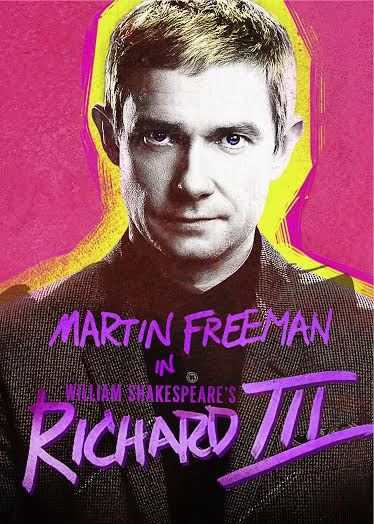
Funny enough:
Benedict Cumberbatch and Sir Ian McKellen also played Richard III before, and both actors were Sherlock Holmes in the past.

Sherlock | TV Series (2010-2017) °° The Hollow Crown | TV Series (2012-2016)
Mr. Holmes | Movie (2015) °° Richard III | Movie (1995)
📚📖 Happy World Book Day!!! 📖📚
Anniversary of the death of Miguel de Cervantes, William Shakespeare and the Garcilaso de la Vega.
#martin freeman#Richard III#Wonderful theatre actor#Still sad that I will never see him perform on stage.#Trafalgar Transformed#William Shakespeare#Shakespeare#Theater play#World Book Day#Sir Ian McKellen#Benedict Cumberbatch#Youtube
45 notes
·
View notes
Text
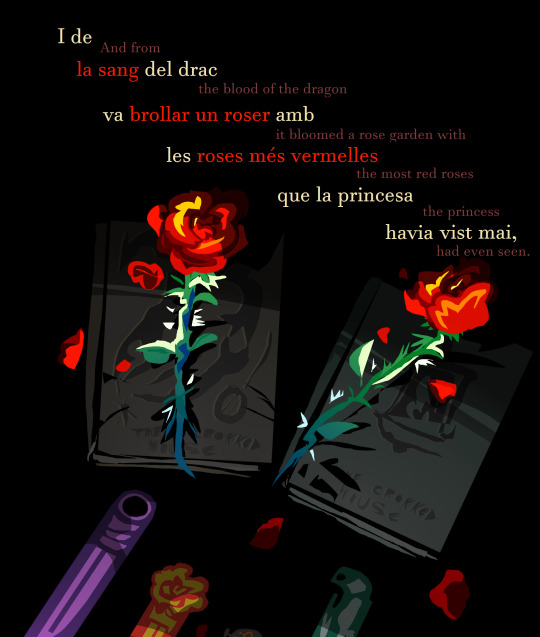
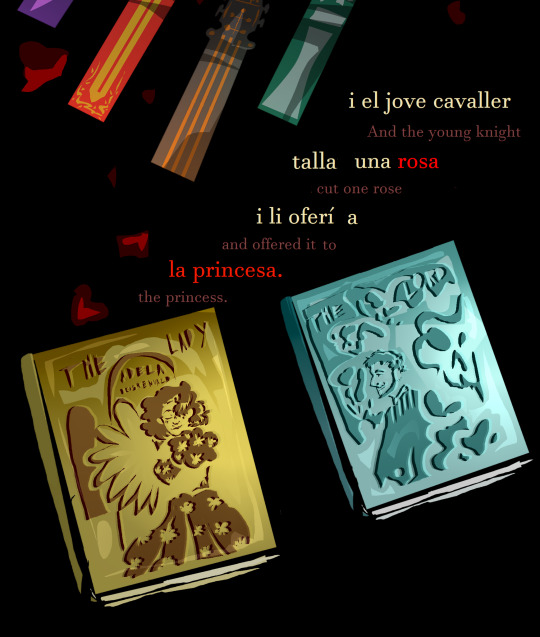
"Drac mort, roses de sang, el cavaller lluny, però el seu cor? El seu cor en la mà de la princesa on es va quedar fins l'últim estel es va desfer."
Dragon death, roses of blood, and the knight away, but his heart? His heart was in the hand of the princess where it stayed until the last kite melted.
And you have to go because they need you, yes, yes! But god, let me keep something of you, some dirt, some hair, some skin, something to bury when I'm older when you're gone.
Gone.
In Catalunya the 23 of April is "Sant Jordi" or Saint Gorge which is like our "Valentine's Day" where roses are gifted to loved ones (the knight gifting the rose to the princess as the legend says) and books. (since it's the date that Cervantes, Shakespeare and Inca Garcilaso de la Vega died.)
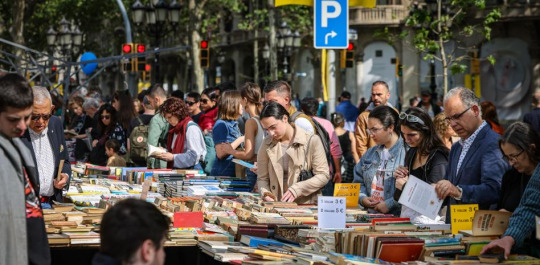
A book stand in la Rambla, Barcelona (photography by Jordi Borràs)
And it's one of my favourite festivities it's fun, it's silly, the children do Caramelles which it's a whole other dealt, but it's hilarious to do as a child and to look back as an adult.
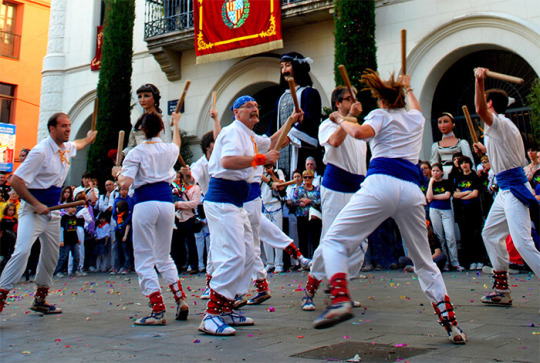
Ball de Bastons de Canye, 2012 (photography by Nil Rider)
Els balls de bastons make me who I am and a dangerous child with two clubs and no fear of death.

ALSO THE SANT JORDI PA! HEAVEN! God, I love bread-
#legends of avantris#edge of midnight#lethica nightborne#marius renathyr#briggsy “the kutlass” kratch#yorgrim#farryn of the hartsblight#jericho sticks#virgil (raum)#ade#adela lord of druskenvald#philip lord of druskenvald#tw death#tw death mention#you thought i could go with marius for this one#nope i still miss my faun#im rambling about my culture again leave me-
51 notes
·
View notes
Text

Oggi 23 Aprile, è la Giornata Mondiale del Libro e del diritto d'autore.
È un invito a valorizzare la fertilità delle idee di cui i libri sono rappresentati e strumento di diffusione.
Il 23 aprile ogni anno si celebra in più di 100 Paesi la Giornata Mondiale del Libro e del Diritto d’Autore, istituita nel 1996 dall’UNESCO e festeggiata con iniziative, eventi e progetti volti a promuovere la lettura, le attività editoriali e l’importanza della proprietà intellettuale protetta dal copyright
L’idea di una giornata dedicata al libro nacque per la prima volta in Catalogna, promossa dallo scrittore valenziano Vincent Clavel Andrés. Fu re Alfonso XIII, il 6 febbraio 1926, a istituire una Giornata del libro spagnolo celebrata in tutta la nazione, inizialmente fissata nella data del 7 ottobre e successivamente spostata al 23 aprile, giorno della festa del patrono della Catalogna San Giorgio. In questa giornata, è tradizione in Spagna che gli uomini regalino alle proprie donne una rosa, sicché divenne consuetudine tra i librai catalani dare in omaggio una rosa ai clienti per ogni libro comprato. Divenuta festa internazionale nel 1996 per volontà dell’Unesco, la Giornata Mondiale del Libro si celebra in una data di grande importanza per il mondo delle lettere, in quanto proprio il 23 aprile morirono tre grandi scrittori, lo spagnolo Miguel de Cervantes, l’inglese William Shakespeare e l’Inca Garcilaso de la Vega.
Io Leggo ❤
Per capire la differenza che esiste tra leggere un racconto su internet o su un libro, basta chiudere gli occhi e mettere il palmo della mano, prima sullo schermo e poi sulla pagina del libro. Il contatto con la carta, anche detto ‘libridine’, ci fa capire la differenza…’
(Luciano De Crescenzo)
Buongiorno.....Cosi 🌈
25 notes
·
View notes
Text
Can't write in full sentences now because I'm hungry but there's something so fascinating [a snapshot of the age] in how Spanish and mestizo chroniclers applied the vocabulary + mental architectures that they brought over from Spain to describe a completely different culture:
Indigenous temples were called mosques
Huacas (objects or geographical elements that were considered to be alive) and mummies were called idols
Garcilaso who was raised by the Inca side of his family until the age of twenty referred to the knighting of young men ("armar caballeros") to describe the indigenous coming of age ceremony for men
Llamas and alpacas were called sheep of the country / of the land ("ovejas de la tierra" vs. "ovejas de Castilla" = actual sheep)
The conquistadores being professional soldiers who had fought against the Muslims cried out "¡Santiago!" to give themselves strength and inspire fear during a skirmish; Saint James the Moor-slayer ("Santiago Matamoros") was transformed into Santiago Mataindios and was said to have appeared in the New World as well
The ruins of prehispanic peoples were said to belong to Moors or gentiles; there are place names that are "[Name] de Moro" or "[Name] del gentil / de los gentiles" to refer to the graves or towns of unbaptised people, and to this day they are called this way by locals who are more often than not also indigenous, but somewhat Hispanicised
A lot has been written about transplanted geographies by immigrants and colonists but I like to make a list of examples I remember
82 notes
·
View notes
Text
1564-
El día 23 de abril fue elegido como Día Internacional del Libro, pues coincide con el fallecimiento de Miguel de Cervantes, William Shakespeare y el Inca Garcilaso de la Vega en la misma fecha en el año 1616 (aunque realmente no es así: Cervantes falleció el 22 y fue enterrado el 23, mientras que Shakespeare murió el 23 de abril del calendario juliano, que corresponde al 3 de mayo del calendario gregoriano). En esta fecha también fallecieron William Wordsworth (en 1850) y Josep Pla (en 1981). La Unión Internacional de Editores propuso esta fecha a la Unesco, con el objetivo de fomentar la cultura y la protección de la propiedad intelectual por medio del derecho de autor. La Conferencia General de la Unesco la aprobó en París el 15 de noviembre de 1995, por lo que a partir de dicha fecha el 23 de abril es el "Día Internacional del Libro y del Derecho de Autor.
#palabras#frases#textos#textos nocturnos#pensamientos#vida#culture#books & libraries#escritos de amor#amor#dia internacional del libro
17 notes
·
View notes